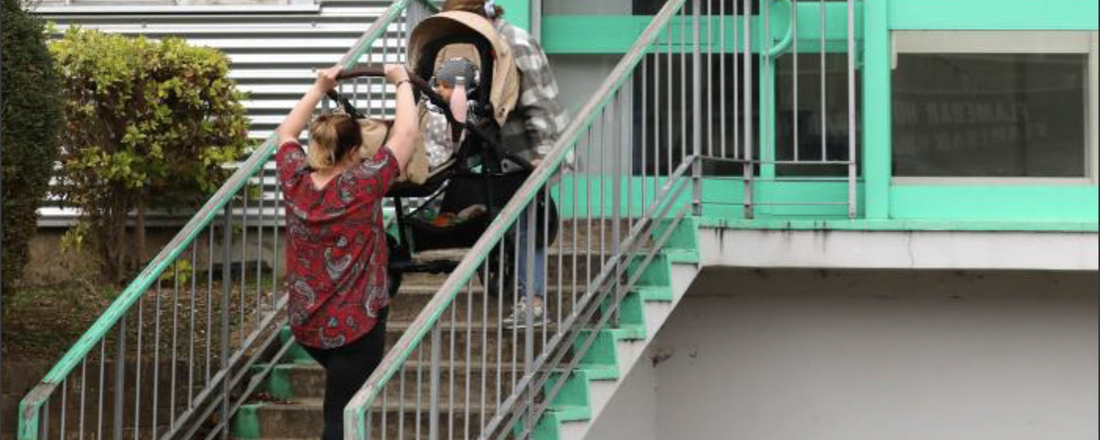Get updates from The Developer straight to your inbox Yes, please!
Permitted development homes “uninhabitable” for the future
Zurich UK warns that office-to-residential conversions are creating subpar housing at risk of overheating

Leading insurer Zurich UK has warned that office-to-residential conversions must be “done properly” with fears too many new homes created under permitted development are unfit for warmer summers and prone to water leaks.
A reported 89,500 homes have been developed into homes from commercial uses since permitted development rights for commercial buildings were introduced as a measure to cut red tape in 2013.
Since then, a decline in demand for office space and the lifting of a size cap on office-to-residential conversions in March has seen applications surge by 20% in England in a year.
“Increasing the UK’s housing stock is vital and understandably high on the government’s agenda, however it’s important that conversions are well-designed and well-built,” says Paul Redington, Zurich’s Major Loss Property Claims Manager.
While building regulations now address the risk of overheating in new-built housing, homes converted from offices under permitted development are not required to meet the standard
Zurich is raising the alarm about the risk of overheating in poorly converted properties. Heat-related deaths in the UK are predicted to increase by 250% by the 2050s, according to estimates from the UK Climate Change Committee. While building regulations now address the risk of overheating in new-built housing, existing buildings and new homes converted from offices under permitted development are not required to meet the standard.
In addition to the risk of overheating, Zurich reported that they have seen a high volume of “escape-of-water” claims from office-to-residential conversions due to substandard plumbing systems or buildings “simply not designed to accommodate dozens of kitchens and bathrooms.”
Zurich joins a growing call for regulatory oversight to ensure residential conversions meet basic living standards, with research from University College London showing that life in these conversions impact residents’ wellbeing and quality of life.

Future conversions include plans for 250 flats in Croydon’s ‘50p Building’ and the conversion of a Dell EMC office into 206 flats. But several applications have been refused for reasons of fire safety and highway impact, while some London councils are seeking to limit conversions.
Councillors from Bradford to Harlow have expressed anxiety over the quality of housing created under permitted development, with concerns ranging from overcrowding to a lack of outdoor space, transport and social infrastructure. Housing does not need to meet building regulations where there is a ‘material change of use’.
In addition, many have expressed fears about fire safety due to overcrowding. Jackson Caines, Housing Campaigner & Community Organiser at Harrow Law Centre, has heard conditions described as "worse than prison." Caines says that a surveyor visiting Krissh House found a defective automatic fire detection system and a blocked escape route. "In my experience, permitted developments tend to attract unscrupulous landlords who provide a poor service to tenants."
Jordi López Botey, Economic Justice Campaigns and Programme Lead at Health Justice charity Medact, has conducted visits to some permitted development blocks and interviewed households: "Lack of space, poor ventilation/condensation, natural light, overheating, fire risks, mould and damp and insecure tenancies were some of the common issues observed. All of these raise very serious health concerns."
The Town and Country Planning Association (TCPA) has described some homes developed through Permitted Development as “slums of the future”. The TCPA has called on government to amend or bring forward new legislation to improve housing standards and has called for legally binding Healthy Homes standards be applied to all housing.
“We’ve been shocked by the condition of former office blocks and out of town industrial buildings converted through permitted development rights,” Dr Rosalie Callway, Projects and Policy Manager, TCPA has said. “The poor quality of many of these conversions reflect the lack of strong and clear standards, with many people living in damp, cramped, noisy, unsafe and isolated properties.”
Zurich reported that they have seen a high volume of “escape-of-water” claims from office-to-residential conversions due to substandard plumbing systems or buildings “simply not designed to accommodate dozens of kitchens and bathrooms”
The Local Government Association has also called for Permitted Development for office-to-residential to be scrapped to “ensure all conversions and new developments contribute to the delivery of desperately needed affordable homes across the country.” OpenDemocracy has estimated that at least 25,000 affordable homes have not been built due to the introduction of permitted development rights.
While the reuse of buildings is widely welcomed, there is industry support for some regulation to ensure these homes are fit for habitation.
“In a country experiencing a severe housing shortage and increasing residential property values, conversion to residential is an obvious consideration which the Government has facilitated through various regulatory relaxations… but the buildings need to be fundamentally suitable for such conversions,” says Tony Mulhall, Senior Specialist in Planning & Development at RICS.
“The residential standards applied need to ensure we don’t create problems in the future, especially with increasing temperatures predicted,” adds Mulhall. “For developers relying on permitted development rights to convert, [regulation] would draw them back into the planning permission regime – something they would probably wish to avoid.”
The government introduced minimum space standards for permitted developments and other rules including provisions for natural light in 2021 after its own report found that 77% of conversions did not meet national space standards and that some homes created had no windows.
If you love what we do, support us
Ask your organisation to become a member, buy tickets to our events or support us on Patreon
Sign up to our newsletter
Get updates from The Developer straight to your inbox
Thanks to our organisation members
Become a member
© Festival of Place - Tweak Ltd., 124 City Road, London, EC1V 2NX. Tel: 020 3326 7238
